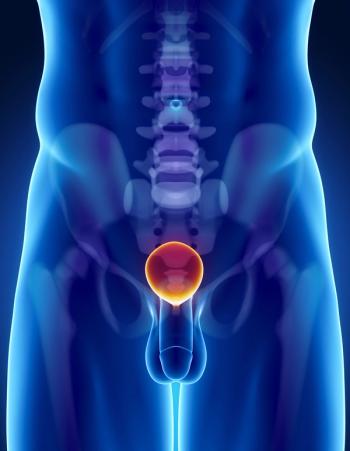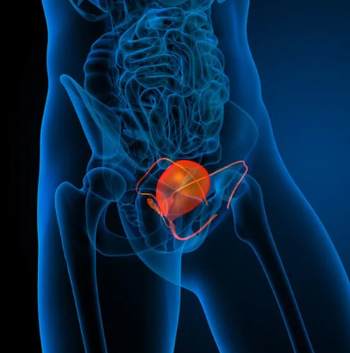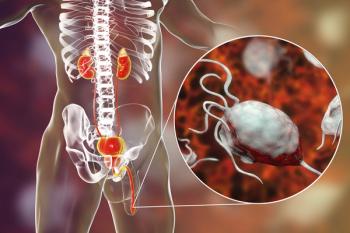
Oncology NEWS International
- Oncology NEWS International Vol 16 No 10
- Volume 16
- Issue 10
Patient selection key to appropriate use of early ADT
If PSA rises in a prostate cancer patient after prostatectomy, should the man receive immediate androgen deprivation therapy? Two experts at the Third Annual Oncology Congress approached the question from different angles but reached essentially the same conclusion.
SAN FRANCISCOIf PSA rises in a prostate cancer patient after prostatectomy, should the man receive immediate androgen deprivation therapy? Two experts at the Third Annual Oncology Congress approached the question from different angles but reached essentially the same conclusion.
Speaking in favor of early ADT use, Michael Koch, MD, pointed to a number of studies suggesting a cancer-specific benefit to early therapy and concluded that early ADT should be strongly considered in populations at high risk for rapid disease progression. Taking the "con" side, Nancy Dawson, MD, said there are no reliable prospective studies showing an overall survival benefit for early ADT in all patients, but also concluded that selected high-risk patients may benefit.
Dr. Koch, who is John P. Donohue Professor of Urology at Indiana University School of Medicine, pointed to a literature review that ASCO relied on to update its practice guideline on this issue (J Clin Oncol 25:1596-1605, 2007).
The authors concluded that in patients with metastatic, recurrent, or progressive disease, immediate use vs late use (at onset of symptoms) of ADT results in a moderate decrease (17%) in relative risk for prostate-cancer-specific mortality, but this is offset by a moderate increase (15%) in risk for non-prostate-cancer-specific mortality. There was no significant advantage in overall survival for early use.
"The data are overwhelmingly positive that early ADT can decrease prostate cancer mortality; the question is whether it can decrease overall mortality, and that has to do more with how you select your patients than whether early treatment is effective," Dr. Koch said.
The best level 1 evidence for use of early ADT, Dr. Koch maintained, comes from Messing et al (N Engl J Med 341:1781-1788, 1999). In this study, 98 node-positive patients with no evidence of bone metastases were randomized after radical prostatectomy to early ADT or observation until nonserologic relapse.
Only 4 of 47 patients who received immediate ADT had failed therapy at a median of 7.1 years of follow-up, compared with 34 failures in 51 patients who received delayed therapy. "Only 50% of the failures in the delayed patients responded to hormone therapy," he stressed, adding that a study update showed a significant advantage in 10-year overall survival for early ADT (82% vs 56%).
Dr. Koch described a study by Moul et al (J Urol 171:1141-1147, 2004) as providing "somewhat weaker evidence" because of its retrospective nature. The study from the Department of Defense Prostate Disease Registry found decreased clinical metastases for immediate ADT vs delayed ADT in patients with high-grade disease or short PSA doubling time (PSADT) but not in the group as a whole.
The problem with ADT, Dr. Koch said, is its association with increased cardiovascular disease risk. He cited an observational study of 73,000 Medicare enrollees (Keating et al: J Clin Oncol 24:4448-4456, 2006) showing not only an increased risk of heart disease associated with ADT but also an increased risk of diabetes. "This study kind of turns things on their ear," he said. He pointed out, however, that these adverse events are time dependent, and that there is the possibility that the effects can be mitigated by other interventions, such as cholesterol management and exercise.
Importance of PSADT
Of course, whether to treat patients with ADT after a PSA recurrence depends on whether such recurrences are clinically significant. Both speakers cited Pound et al (JAMA 281:1591-1597, 1999), a review of prostatectomy patients at Johns Hopkins who had a PSA recurrence that was not treated.
The mean actuarial time from PSA recurrence to metastatic disease was 8 years, and between metastatic disease and prostate cancer death, another 5 years, "so the total window between PSA recurrence and death was 13 years," Dr. Koch said. In this study, he said, "the thing that put patients at risk for early metastatic disease was short PSADT (< 10 months)."
Another study cited by both speakers was D'Amico et al (J Natl Cancer Inst 95:1376-1383, 2003), which examined a cohort of 8,669 patients with PSA recurrence after definitive local therapy. PSA doubling time of 3 months or less was strongly associated with time to prostate-cancer-specific mortality (HR 19.6).
Dr. Koch noted that he and his colleagues at Indiana have "always advised against early ADT in patients with a long PSADT." In his experience at Indiana, of about 200 observation patients who recurred after prostatectomy, about half had a PSADT of less than 6 months and about one-third, 6 to 12 months. But 18% had a very long PSADT (> 12 months), including 9% with PSADT of > 2 years.
"Those people with slow PSADT are not at risk of prostate cancer death with observation alone," he said. "If you use ADT in the whole group, potentially 20% are at increased risk of cardiovascular death with no decrease in prostate cancer death." On the other hand, according to D'Amico et al, in patients with high-grade disease and short PSADT, 5-year mortality from prostate cancer is 80%. "These patients are not going to die from cardiovascular disease; they're going to die from prostate cancer," Dr. Koch said.
No prospective proof
Speaking against the early use of ADT, Dr. Dawson, of the Lombardi Comprehensive Cancer Center, admitted that it is "easy to succumb when a patient walks in with a rising PSA." But she argued that in low-risk patients, "giving hormonal therapy is somewhat of a waste of time. There is no prospective proof that early ADT improves overall survival, and ADT does have potential harmful effects."
She also argued that by giving early ADT, "you're actually closing a window of opportunity for patients to receive novel therapies in clinical trials," because this is a time when men are not sick from their disease or the side effects of treatment.
Dr. Dawson noted that the question is important because about 50,000 prostate cancer patients per year have a rise in PSA after definitive local treatment. "But a large percentage actually have very slow-growing disease, and it is this group that we really do not want to promote giving hormonal therapy," she said, citing the same Pound et al data as Dr. Koch.
By combining PSADT with Gleason score and the length of time since definitive treatment, she said, citing D'Amico et al, "you can select a group of patients who have excellent survival and a smaller group with a poor prognosis. You certainly don't want to treat everyone based on poor outcome of the smaller group."
PSADT is a continuum
Dr. Dawson cited Freedland et al (JAMA 294:433-439, 2005), a study using Johns Hopkins data, to suggest that PSADT is a continuum with multiple cutpoints. "Hazard ratios for prostate-cancer-specific mortality are quite high with a PSADT of less than 3 months and fall lower and lower as PSADT approaches 15 months. When PSADT is greater than 15 months, your chance of dying of prostate cancer or of another disease becomes equal," she said.
Based on a table in the Freedland paper, Dr. Dawson has made a "little plastic card" that she consults when patients ask about their risk of dying from their prostate cancer and whether they should receive ADT. It shows 5-, 10-, and 15-year estimates of prostate-cancer- specific survival for patients with a PSA recurrence based on time from prostatectomy, Gleason score, and PSADT.
Articles in this issue
about 18 years ago
Bill aims to 'revitalize' FDA by adding powers and databasesabout 18 years ago
New myeloma trial results; two new studies initiatedabout 18 years ago
Neoadjuvant trastuzumab increases pCR ratesabout 18 years ago
Court rejects right of terminally ill to unproven drugsabout 18 years ago
Sorafenib improves overall survival in Asian HCC ptsabout 18 years ago
Skipping tam doses increases risk of deathabout 18 years ago
The SGR: The madness behind physician payment fee cutsabout 18 years ago
Dr. Pegram seeks new breast cancer challenges at Miamiabout 18 years ago
SearchMedica.com receives awardNewsletter
Stay up to date on recent advances in the multidisciplinary approach to cancer.

















































































